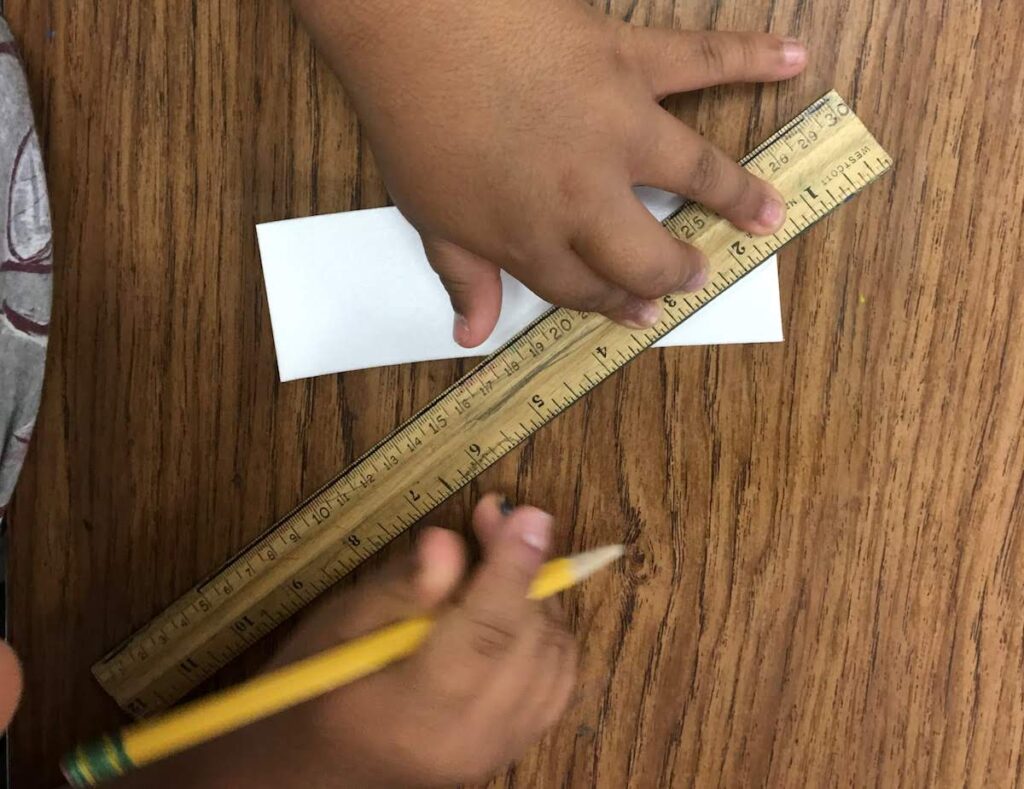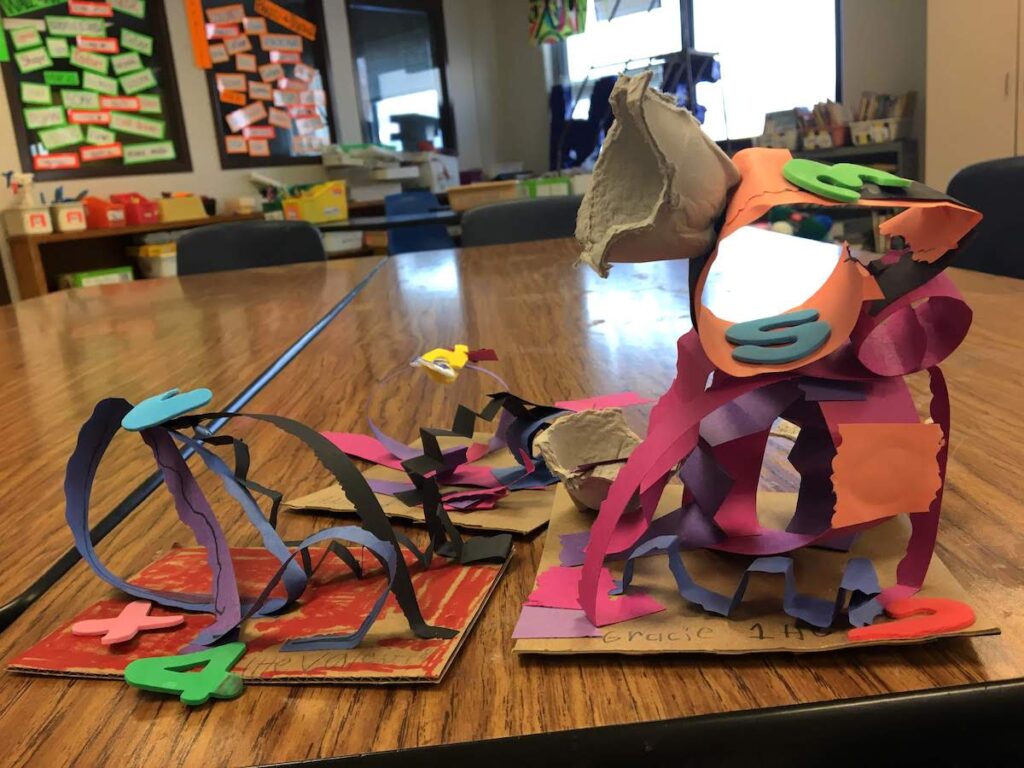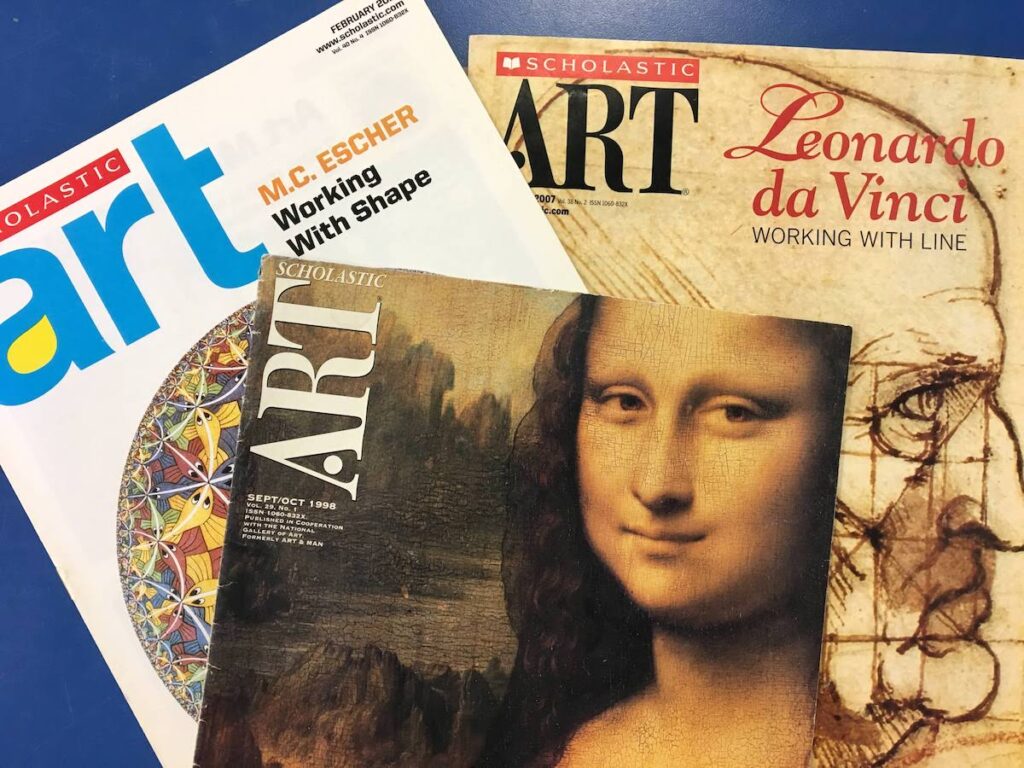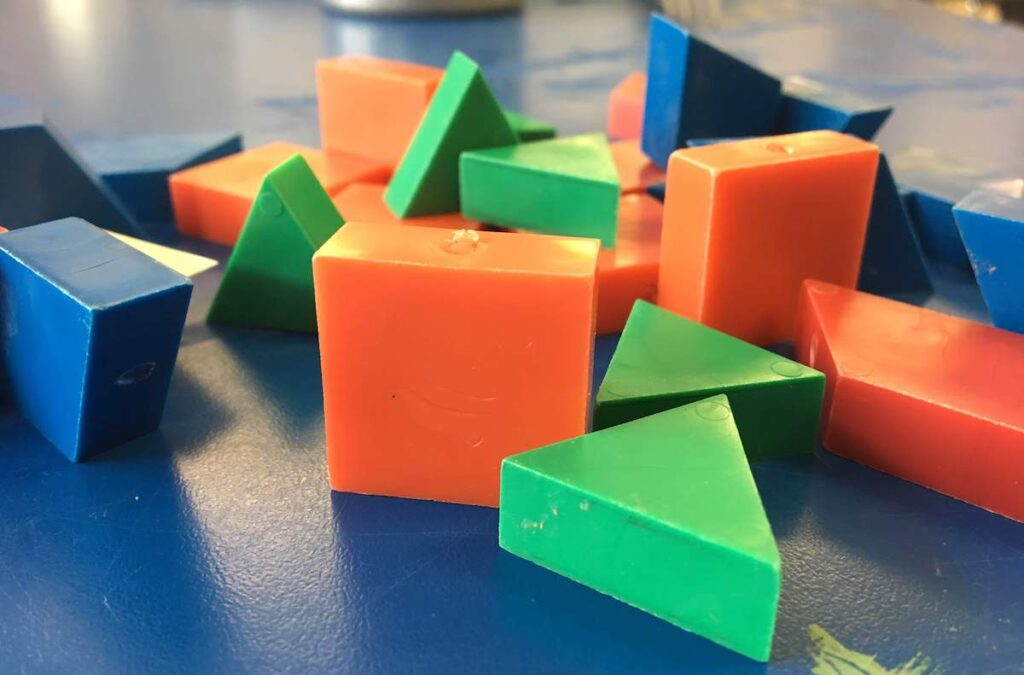“Making Math Connections.” The phrase alone prickles many an art teachers’ spine. Combining the color, passion, and excitement of the art classroom with that of the black and white world of math can get us all flustered.
Such a reaction is understandable given that many art teachers chose art instead of math for a reason. Yet, the connections between the two subjects are irrefutable and inherent. One does not exist without the other. In fact, with a little planning, connections are possible in any lesson or project, especially at the elementary level.
Here are 6 anxiety-free ways to connect math and art in your classroom.
1. Bring Out the Rulers

Do not leave ruler introduction to the classroom teachers. Rulers are an everyday tool for artists. Show your students how you use rulers. Have them do any age-appropriate measuring and cutting themselves. It may be an extra step or take a bit more time, however, measuring and cutting is an essential skill. It will enhance their spatial reasoning skills and lead to better-informed creative choices.
2. Introduce Architecture

Architecture is one big, creative mathematical puzzle. Artists have been creating structures for centuries. By putting their own signature style on cities, places of worship, and government structures, architects have not only created structures but art. Share such feats of human ingenuity with your students. The work of artists like Antoni Gaudí, Frank Lloyd Wright, and master, Michelangelo, are primary examples of the magic of math and art combined.
As a result, any time students build something or assemble a three-dimensional sculpture, they are using mathematical and creative skills. Encourage your math-averse students by reminding them if they are good at building things; they can also excel in academic math. Make the connection for them. You can see their brain wheels turning as they make decisions about where to put pieces or elements. Use this article as a springboard for examples. Or, set up an architectural center as a permanent part of your classroom. Finally, develop a project designing a building based on the style of a famous architect.
3. Use Mathematical Vocabulary and Language
Words matter, and math is more than numbers. The language you use with your students can connect art and math without any special supplies or projects. Most likely, your district has math vocabulary standards by grade level. Research the concepts and terms your students are learning in math with their classroom teachers. Here is a helpful example. Then, make sure you are using the same words when you are instructing students and talking about their artwork.
4. Share Examples
Show your students the amount of math you use as a teacher. You might be pleasantly surprised by their curiosity. Break down your materials budget for them. How much do you spend per student, per year? Tell them how much clay you plan for and buy in a school year and why. Show them the ratio of water and flour you use to make papier-mâché. Describe to them how many minutes of creative time they have in the school year compared to that of recess. Use the daily math you engage in as an advocacy tool for their art education!
5. Choose Artists Who Use Math

Use other visual artists as shining examples of creative and mathematical connections. The obvious archetype of mathematical and creative genius, Leonardo DaVinci, is a great place to start. Highlight his flying inventions and his curious nature. He was fascinated with art AND math.
Any time you discuss pattern, shape, form, symmetry, and architecture show an example of M.C. Escher’s precise, puzzle-like work. Finally, there are a myriad of contemporary artists using math to accomplish their creative passions. For example, Bathsheba Grossman is a trailblazer. She uses art and three-dimensional printers to make unique sculptures never seen before. Kristin Farr is another engaging artist to share.
6. Keep Talking about Shape and Form

Students at the elementary level (and beyond) are constantly developing their spatial intelligence. Every day is a little geometry lesson. While students are drawing, cutting, coloring, painting, constructing, forming, and molding shapes, they are learning about spatial relationships. When students can visualize shapes “in their mind’s eye,” they have more freedom with their artwork and other subjects as well. In a nutshell, keep up the good work you do with your students and shape. It is already serving up a hearty helping of math connections.
Stereotypically, those who go into the vocation of visual arts are not mathematicians. In fact, many art educators have anxiety about the subject. (We might even avoid it more than loose glitter.) But, you actually use math more than you think. Any time you manage art supplies, organize an art show, or ask a student to fold a piece of paper in half you are incorporating math. Voila! Furthermore, just because you may feel uneasy when it comes to the subject of math, your students should not.
How do you make math connections in your classroom?
Are you a math-loving or math-loathing artist? Why?
Magazine articles and podcasts are opinions of professional education contributors and do not necessarily represent the position of the Art of Education University (AOEU) or its academic offerings. Contributors use terms in the way they are most often talked about in the scope of their educational experiences.





